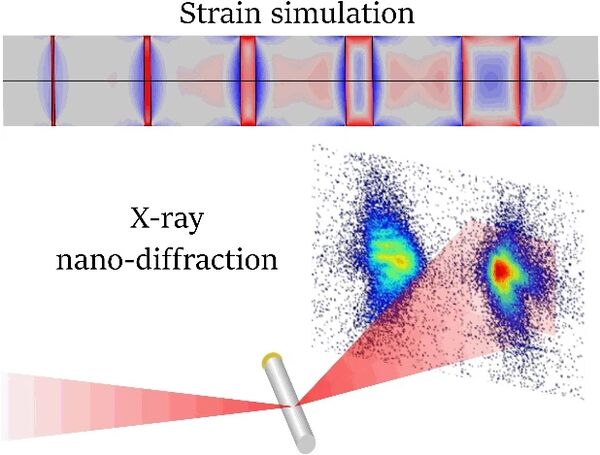Nanoscale coherent X-ray diffraction

X-ray diffraction can be used to study strain, piezoelectricity and heating in crystalline samples. Modern X-ray optics can reach well below 100 nm focus size, and with coherent phase retrieval methods the spatial resolution can reach around 10 nm. Hard X-rays can penetrate through thick samples, allowing measurements of operational devices [Wallentin 2016]. We use such methods to investigate a wide variety of semiconductor nanostructures and devices, but also metals and other crystalline samples.
We have studied core-shell [Wallentin 2017] and axially heterostructured III-V nanowires [Hammarberg 2020], and shown that the shape of bent nanowires can be reconstructed in 3D with nanometre precision [Wallentin 2017]. Ptychography has been used to achiev sub-beam resolution [Hammarberg 2024]. The intensity of focused X-rays can lead to beam damage, and we have studied beam induced heating of nanostructured samples [Wallander 2017].
We are also applying nanoscale diffraction methods to completely different materials, in different collaborations. This includes industrially relevant metal alloys [Marcal 2024], single grain growth in transparent conductive oxides [Dzhigaev 2022], geological samples such as quartz, archeological samples such as brass rings and CsPbBr3 quantum dots.
